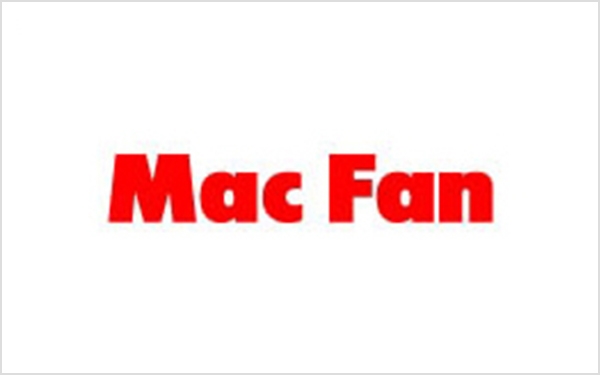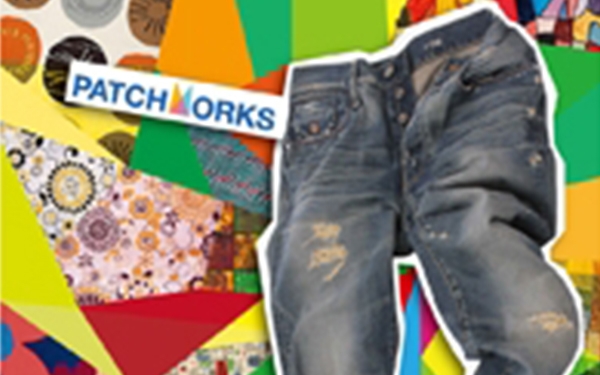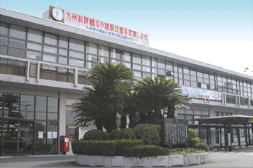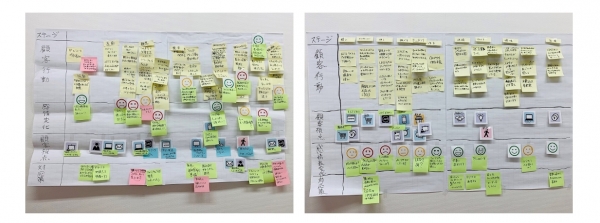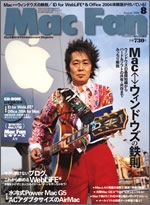
株式会社毎日コミュニケーションズは、就職情報事業部、出版事業部、教育広報事業部などの9事業部から構成された、新しいコミュニケーションのありかたを提案する総合サービス企業です。
その出版事業部において、1993年に創刊したMacintosh専門雑誌「月刊 Mac Fan」の編集、出版を手がけている編集長の小林正明氏と小平淳一氏に、LETSのメリットとフォントを取り巻く昨今のDTP環境についてお話しを伺いました。
Mac OS 9からXへの移行を機にLETS導入を決定

LETS導入を決めた最大のポイントは価格とLETSのコンセプトです。弊社はパブリッシャーですが、実際に制作をしなければならない立場でもありますので、当然ながら世の中の、いわゆる出版を含めたDTP環境が動きつつある状況の中で、私達自身もMac OS 9からXへの移行を含め、いずれ動いていかなければなりません。そのような背景を考えたときに、そもそもこれまで利用してきたフォントにこだわる必要があるのだろうか、という疑問が湧き、そこで「LETS」を採用するかどうか検討しました。実際に比較検討した結果、LETSに多くのメリットがあるのは一目瞭然でした。
「Mac Fan」創刊以来、約10年にわたり他社のOCFフォント環境で制作を行ってきましたが、一昨年前にようやくCIDフォント環境に移行しました。移行したと言っても、直ぐに全てがCIDに移行できたわけではありませんでした。続いてOpenTypeフォントが控えているわけですが、当然Mac誌を出版している同社としてはバージョンアップするか、新たに購入するか、どちらにしても避けては通れません。過渡期がいつまで続くかわかりませんが・・・。
ちょうどいくつかの雑誌が統合される中で、CIDフォント環境でもよかったのですが、やはり将来的にはOpenTypeフォントを使っていきたいという意向がありました。しかし、バージョンアップにしても、プラスαで購入するとしても結構な投資額が必要となりますから、コスト面を考えると現実的には厳しいものがあります。そこで、前述のとおりこれまで10年使ってきた他社のOpenTypeフォント購入とLETS導入を比較検討した結果、特に管理面・コスト面がLETS導入の大きな決め手となりました。さらに全書体、全種類のフォーマットが使えるというメリットの他、今後OpenTypeフォントの文字セットがAdobe Japan 1-5、1-6と進んでも「常に新しいバージョンが自動的に提供される」=「バージョンアップの費用や面倒な手続きが必要がない」というシステムにはとても魅力を感じています。また、標準的な必要書体は全てファミリー展開され、ウェイトが揃っているため非常に使いやすいですね。
近い将来OpenTypeフォントへ移行
「Mac Fan」は現状、Adobe InDesign 2.0、CIDフォント環境で制作を行っていますが、デザイナーや印刷会社など取引先との調整を図りながら、本年9月末発売号からはMac OS X、OpenTypeフォント、Adobe InDesign CSなどの最新の環境へ全面的に移行していくつもりです。実際に8月末発売号より部分的に前述した最新の環境で制作を行い、PDF/X-1aで入稿を開始する予定です。OpenTypeフォントは使いはじめたばかりで、まだ全てを理解できているわけではありませんが、異体字切換などOpenTypeフォント独自の機能・メリットをフルに活用できるよう今後勉強しながらすすめていきたいと思います。
LETSにはもちろんOpenTypeフォントも含まれているため、フォントの移行で今までネックになっていた部分は解決し、私達自身のタイミングで手軽に移行できる面でも高く評価しています。
縦組みの欧文や数字
「Mac Fan」は昨年末発売号より、それまで月2回刊であった「Mac Fan」と月刊「Mac Fan ビギナーズ」を統合し、月刊「Mac Fan」としてリニューアルしました。同時に誌面レイアウトを横組みから縦組みに変更しましたが、半年が経過した今でも次から次に新しい課題が出てきますので、組版のハウスルールなどがまだきっちり構築できていないのが現状です。パソコン業界は欧文を中心とした新しい言葉・用語が常に生まれるため、当然アルファベットで表現する部分が多いのですが、縦組みの欧文テキストや数字を回転させた際、文字の並びや組み合わせによってはプロポーショナルできれいに詰まらないことがあります。これは特に小文字が並んだときには顕著に見られます。一定のパーセンテージで詰めても個々に見栄えは違いますので、それらを1つずつ手作業で調整しなければ綺麗な表情にはなりません。また、全角の英数字についてですが、特に級数が大きくなるほど和文と比べて大きさが揃わない印象もあります。これらがフォントやレイアウトソフトの機能向上によってうまく解決されれば、作業時間の軽減につながり大変助かると思います。
縦組みの欧文や数字
リクエストとして、雑誌の見出しで活用できるような、筑紫明朝の太いウエイトのものを希望します。それからアンチック体(*)があると助かります。現在Mac Fan誌面の漫画部分ではInDesignの合成フォント機能を使って、セザンヌとマティスを組み合わせています。
もう1つ要望を挙げるなら、書体名をわかりやすくしてほしいということです。フォントワークスの書体には、ロダンやマティスなどの芸術家の名前や、キャッチフォントなどは他社にはない独創的な書体名が付けられています。慣れてしまえば何てことはないことかもしれませんが、書体名だけでゴシックなのか明朝なのかを判別するのは難しいようです。スタッフの入れ替わりが少なくないため、担当ページがどのフォントで構成されているかよくわからないこともあります。 Adobe Illustratorなど、書体名がアルファベットで表記されるアプリケーションの場合は更にわかりにくくて、探すのに時間がかかってしまいます。新書体の「筑紫明朝」などのように、今後リリースされる書体については「○○明朝」「△△ゴシック」のようなわかりやすい表記を望みます。
*アンチック体とは
ひらがな・カタカナを対象としたとした古風な肉太の毛筆体。
マンガ(コミック)などで、ゴシック体の漢字と組み合わせて使用されることが多い。
また、そうした書体のことをアンチック体と呼ぶことが多い。
今後のLETSの広がりに期待
現状、商業誌は大半がMac環境下で制作されていて、デザイン的要素や、作り手側のこだわりの部分が随分大きいと思います。今後ますますDTP市場が広がっていく中で、何に一番プライオリティを置くかという考え方をしたとき、「LETS」のシステム・コンセプトが、いかに理にかなっているのかを理解する人々が、どんどん増えていくのではないかと期待しています。
<編集後記>
雑誌の編集・出版ならではの様々なお話しを伺うことができました。書体名や新書体に関することなど、 LETSは会員様の声を製品・サービスに反映させていくことをコンセプトに運営していますので、いただいたご意見ご要望にできるだけお応えできるよう、これからも邁進してまいります。
企業情報
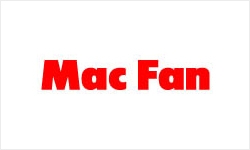
| 社名 | 株式会社毎日コミュニケーションズ |
|---|---|
| 本社所在地 | 東京都千代田区九段南1-5-13 共同ビル2号館 |
| TEL | 03-3230-3968 |
| 設立 | 1973年8月15日 |
| 従業員数 | 559名(2004年8月) |
| 事業内容 | 就職情報事業部、出版事業部、教育広報事業部などの9事業部から構成された、 新しいコミュニケーションのありかたを提案する総合サービス企業 |
注意:
上記の企業情報は取材当時のものです。2011年10月より「株式会社マイナビ」に社名変更されています。
詳細は http://www.mynavi.jp/ をご覧ください。
「LETS」プログラムへのご入会や製品のご購入については、お取引のある販売店様へお問い合わせ・ご注文くださいますようお願いいたします。
